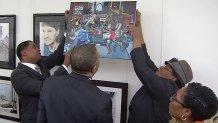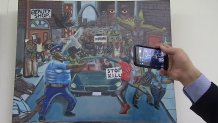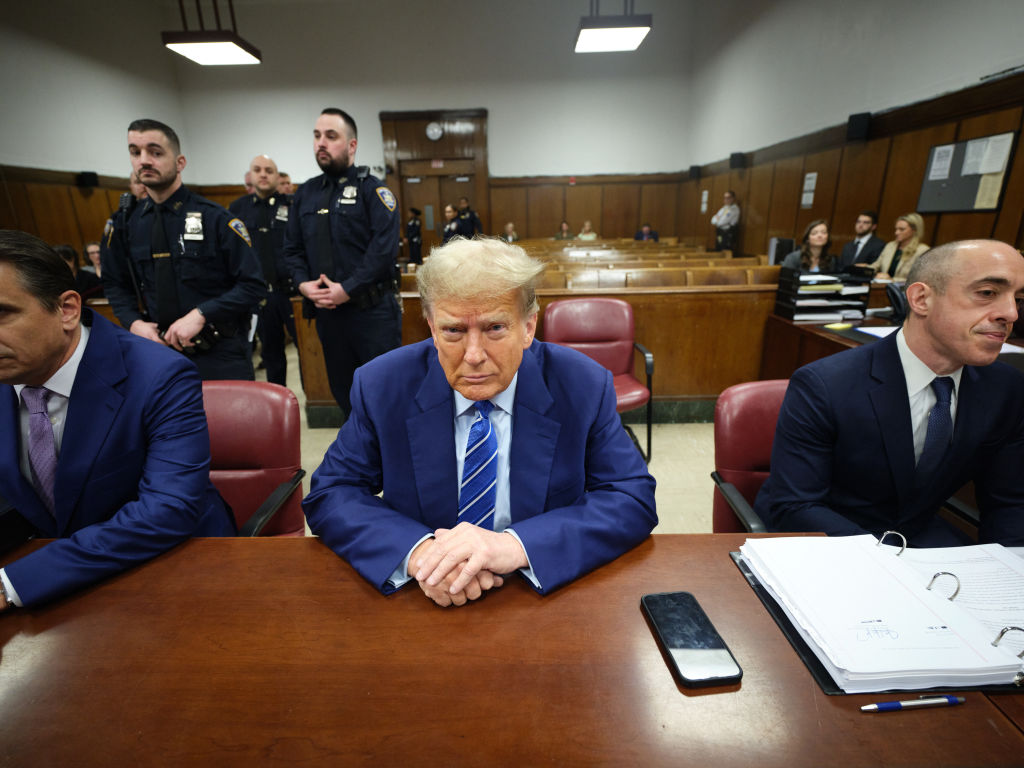Several members of Congress are squabbling over whether or not to hang a high school student's painting, depicting police officers as a pigs, in a gallery at the U.S. Capitol Complex, and the spat is getting off the wall. And back on. And then off again.
Objecting to what it portrays, at least four members of Congress removed the painting from the wall Tuesday, returning it to the office of the congressman whose district it comes from. He described the removal of a controversial painting as a violation of the Constitution, while the congressman who first removed it vowed it will be taken down again.
“I just felt it was something that had to be done,” said U.S. Rep. Duncan Hunter, R-Calif. “So, I just did it.”
The San Diego-based congressman personally removed the painting last week from an area designated for finalists in the annual Congressional Art Competition. The piece by David Pulphus, an 18-year-old from Missouri, depicts police officers as pigs, with one aiming a gun at a black panther.
The piece won first place in the Congressional Art Competition in Missouri’s First District.
But Hunter said he found the piece offensive, and believes it violates the rules of the art competition.

U.S. Rep. Wm. Lacy Clay, D-Mo., and members of the Congressional Black Caucus hung the painting back in place in a hallway in the Cannon Office Building basement Tuesday.
U.S. & World
“I do not agree or disagree with this painting but I will fight to defend this young man’s right to express himself,” Clay said. “He is entitled to that protection under the law.”
Clay described the piece as provocative and symbolic of the mistrust many young African-Americans feel for law enforcement officers.

“This is really not about a student art competition anymore, it’s about defending the Constitution,” he said.
After the painting was put back in its position Tuesday, another member of Congress, Rep. Doug Lamborn, R-Colo., removed it. Clay confirmed to NBC News the piece was put back minutes later.
Later on, Reps. Dana Rohrabacher, R-Calif., and Brian Babin, R-Tex., repeated the take-down, bringing the painting back to Clay's office once again.
Hunter said his office would be reaching out to the Architect of the Capitol, the agency that manages the building and the grounds of the U.S. Capitol, to have the piece removed.
“It’s not about the First Amendment, it’s about the rules of the Capitol,” Hunter said, adding that the public cannot stand up and speak in the House gallery when Congress is in session.
[NATL] Top News Photos: Pope Visits Japan, and More
Several members of the media quizzed Hunter about other offensive pieces of art on capitol grounds, like the statue of Confederate President Jefferson Davis in Statuary Hall. He argued there was no comparison to a piece of art that is part of the building's history and a student's entry in an art competition.
On Saturday, the Peace Officers Research Association of California issued an open later to Clay saying, “the piece denigrates the career that we have chosen.”
The agency suggested constructive dialogue to improve relations between communities and police, “not symbolic, inflammatory and gratuitous gestures like hanging an inflammatory painting on a congressional wall.”
But Hunter tweeted with a kind of olive branch Tuesday, noting that he and Clay are still friends despite the back-and-forth, along with a picture of them shaking hands.
NBC's Asher Klein and The Associated Press contributed to this report.



